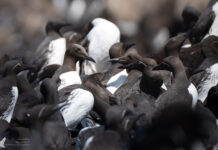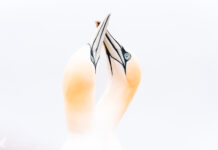Iceland. In the southeast of Iceland there is a very special birdwatching tour. It goes with tractor and hay wagon over the black sand surfaces up to the cape Ingólfshöfði. Here on the remote headland Ingólfshöfði thousands of seabirds nest, among them numerous puffins. An amusing tour, informative and with great views, photo opportunities and a bit of history lessons.
Unassigned, unpaid advertising. The article contains affiliate links.
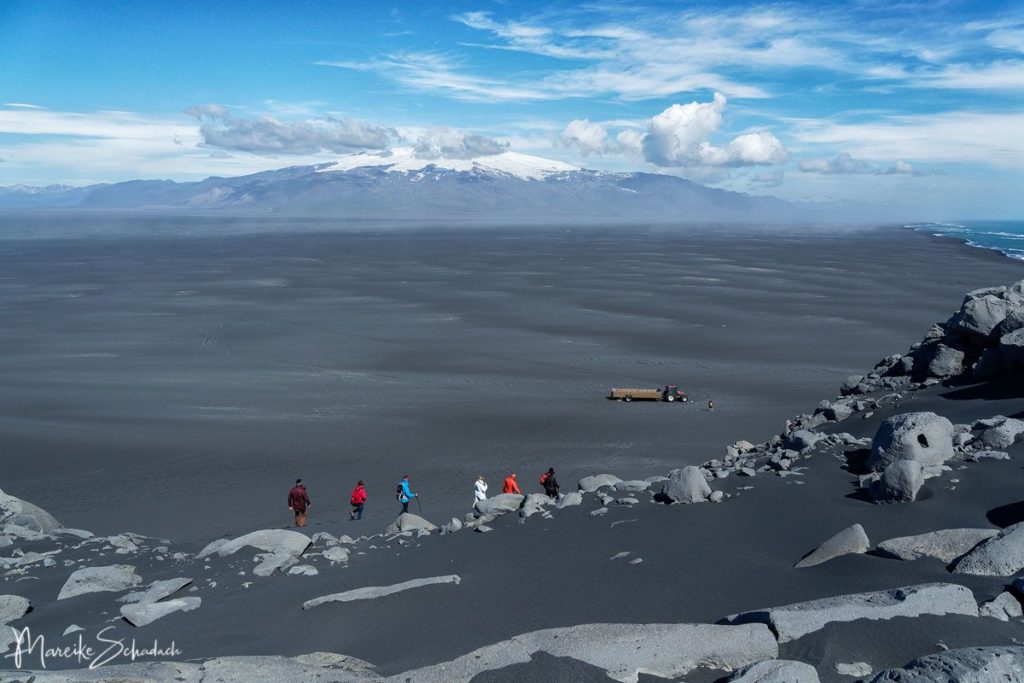
Where is Ingólfshöfði and how do you get there?
Ingólfshöfði is an offshore island on the southeast coast of Iceland between Skaftafell and Jökulsárlón. The island is isolated in the middle of the black sand and only its southern tip borders the sea. It is of volcanic origin and was once surrounded by the sea.
Cape Ingólfshöfði is privately owned. You can only visit it as part of a guided tour . This tour is offered from May 20th to August 20th by a family member of the Hofsnes farm. At the end of August the puffins leave Cape Ingólfshöfði and stay on the sea until the next breeding season. There are several departures a day.

Duration: 2.5 hours, including about 1.5 hours on the island
Route: 2-3 kilometres on foot
Ride with the hay cart: 25 minutes (6 kilometers) one way
Costs: approximately EUR 57
Highlights: amusing tour over the Sander, spectacular views, puffins, skuas, local history
To get to the starting point for the puffins tour to Ingólfshöfði, you drive about 24 kilometres east on the ring road from Skaftafell. From here a gravel road marked Ingólfshöfði turns right. Follow the road for another 2 kilometres to the parking lot.




Birds at Cape Ingólfshöfði
Due to its remote location, Cape Ingólfshöfði has developed into an important breeding area for seabirds. Every spring thousands of birds come here to raise their chicks. The plateau is overgrown with grassland and is a nesting place for the ground-breeding skuas. Countless puffins move into their breeding dens on the slopes of Cape Ingólfshöfði in spring. In addition, kittiwakes, fulmars, black guillemots and razorbillsnest on the steeply sloping rocks. In 1978 the island was declared a nature reserve to provide them with adequate protection. In earlier times, birds and birds' eggs were an important food supplement for the local population. Despite the protected status, eggs may still be collected in limited quantities.
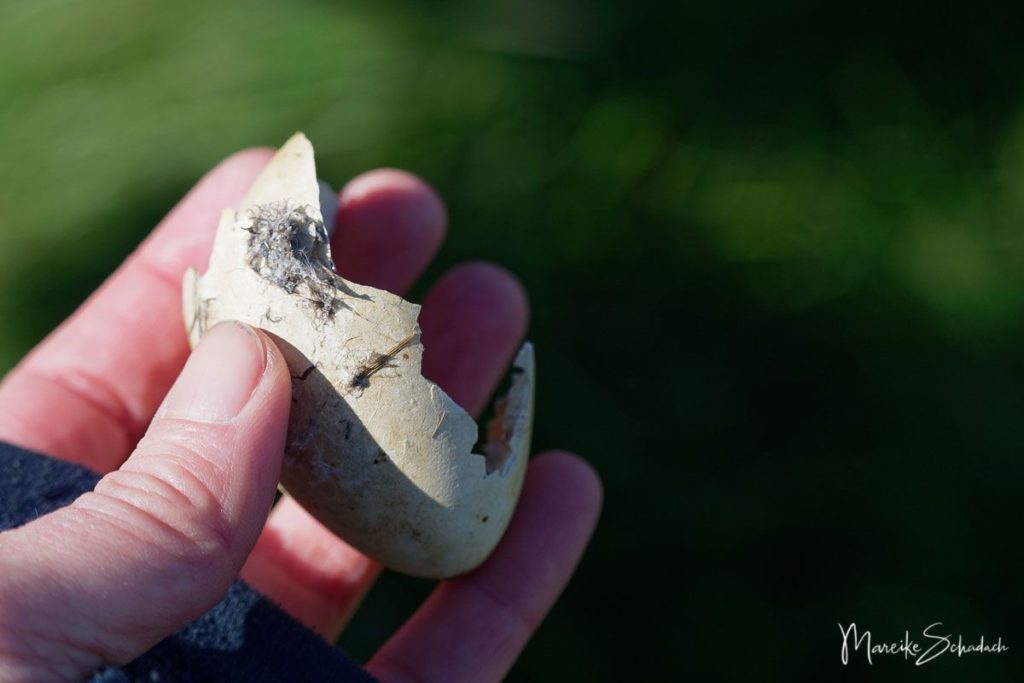
The cape offers not only many breeding places for the birds on its cliffs but also a great panoramic view over the endless beach.

With Tractor and Hay Cart to the Puffins
Endless black Beach
Birdwatching in a different way: With the tractor and hay wagon you go over the black mudflats, through tideways and over wide sandy areas. I am so excited by the vastness of the landscape, that I don't even notice how the tyres of the hay wagon spray black mud on my feet. Exactly where I stand, the floorboards of the hay wagon gape apart and give way to my bright red - now mud-grey - hiking boots.

After 25 minutes we reach the bird mountain. The plateau of the island is 76 meters high, 1.200 meters long and 750 meters wide. It is surrounded by steep cliffs and can only be climbed from one side over a large dune.
Ingólfur Arnarsson
Before we go on to the birds, our guide tells us about Ingólfur Arnarsson. Ingólfshöfði is not only an interesting place because of its birds. It also plays an important role in the history of Iceland. In 874 A.D. the first settler of Iceland, Ingólfur Arnarsson, spent his first winter here with his family. A memorial stele reminds of Ingólfur.

Shortly afterwards we come to the first nesting holes of the skuas and discover the first chicks. The parent birds vigorously defend their nesting meadow and we carefully retreat a little.


Shelter and Lighthouse
The next stop is a small hut from SAR Iceland. This was built in 1912 by a merchant from Reykjavík as an emergency hut for shipwrecked people. It is also used by birdwatchers as accommodation. At Cape Ingólfshöfði there is also a lighthouse and a beacon for aviation. The lighthouse was built in 1916 and renovated in 1948.


Puffins from Ingólfshöfði
The highlight of the tour is not far off. We see our first puffins.. A magnificent guy, who proudly presents us his captured sand eel in his beak. Here on the grass slopes there is a lively coming and going. We see many parent birds with their sand eels disappearing into the breeding dens. Some puffins, on the other hand, are sitting in front of their breeding den and are probably thinking about what to do next.


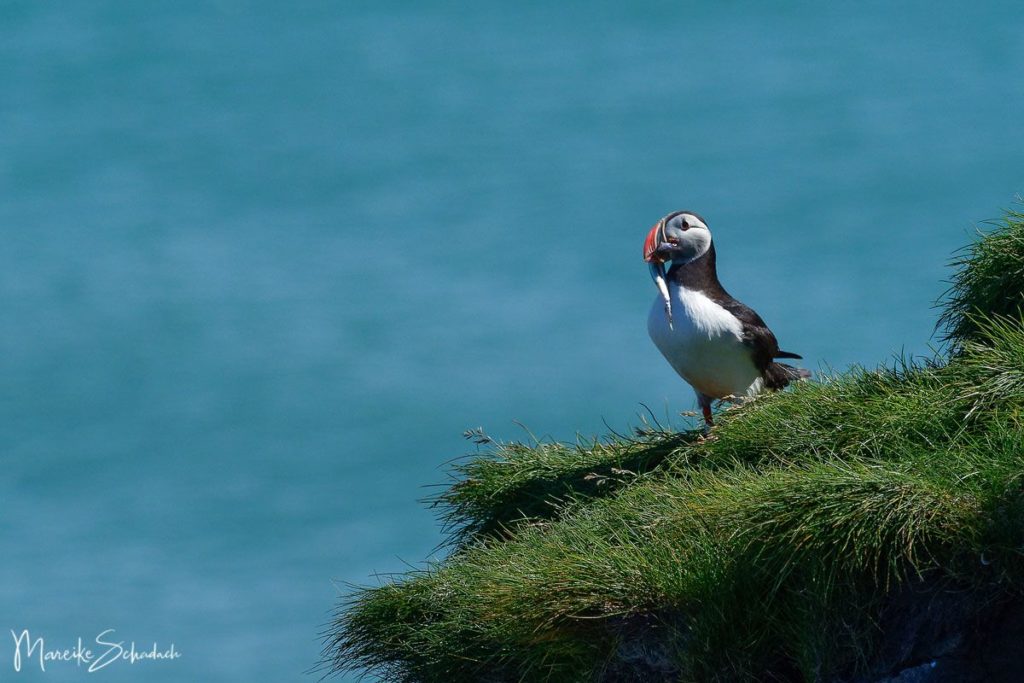
Detour to the Sea
We circle the plateau and descend again to our tractor. But before we leave we make a small detour to the sea and see the bird rocks again from below. For the following return trip I look for a dry place for me and my red shoes on the hay wagon.
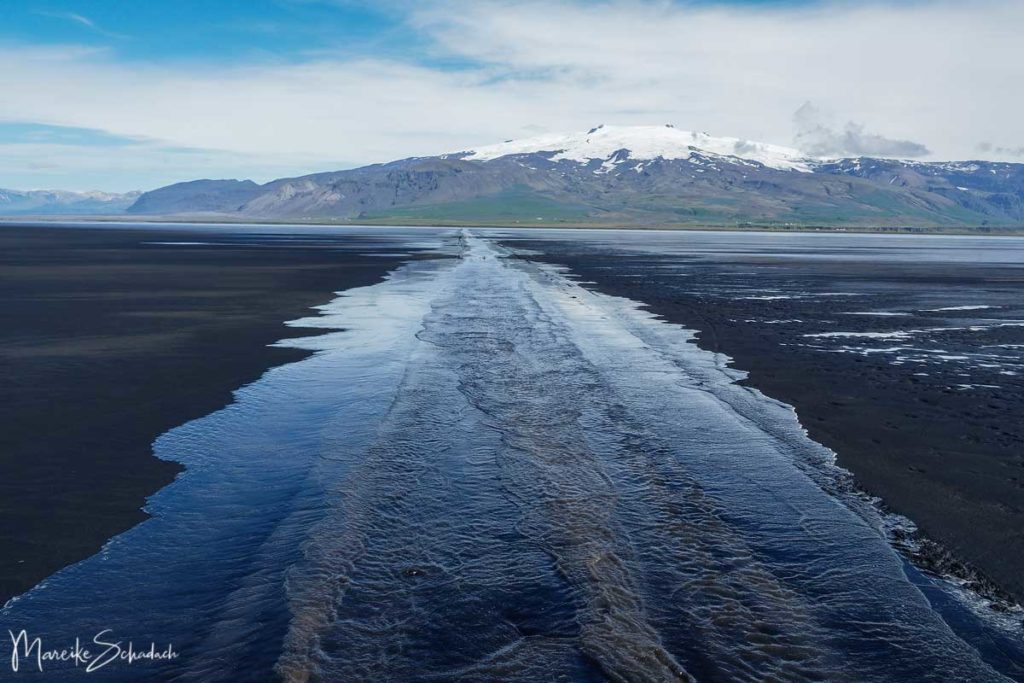
What should I wear?
As always in Iceland, you should be prepared for any weather. Since the location of the cape is very exposed, you should be prepared for wind and bring something windproof and waterproof to cover yourself. You should also bring a sandproof bag for your camera, as sandstorms can sometimes occur.

Book Recommendations for Iceland
Do you want to know where the journey is going? Then I can recommend this travel guides* to you.
You can order the travel guides on Amazon by clicking on the pictures. If you buy a product via an affiliate link, I get a small commission and you help me to keep filling Fernweh-Motive with interesting articles. This does not make the product more expensive for you.
Guided Tours in Iceland
You don't feel like wandering around on your own and would rather join a guided tour in Iceland? Nothing could be easier. If you book an excursion via the following affiliate links, you will support Wanderlust Motifs with a small commission. The tour will not be more expensive for you. Merci!
Have you ever done the tour to the Puffins of Ingólfshöfði? How did you like it? Do you have any questions or suggestions about my article? If so, please write me a comment!
Do you want to know when there are new articles on my blog? Then follow me on Facebook, Pinterest or Instagram. I would also be very happy if you share my article with your friends.
Recommendations for further Reading
Do you love the Scandinavian countries as much as I do? Then you might also be interested in my articles about the Kayak Tour in the Swedish Archipelago or a Trekking Tour to the Greenlandic Ice Sheet.








